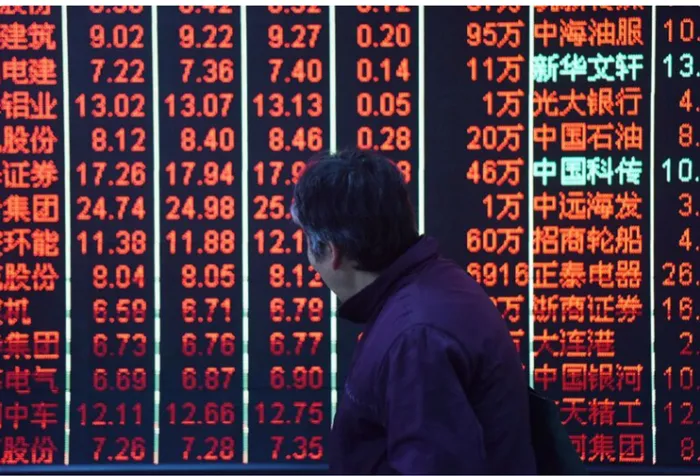Words on wealth: how markets fared in the second quarter

Despite global tensions and local challenges, South African investors saw impressive returns in the second quarter of 2024, with local assets outperforming expectations.
Image: File
In spite of heightened global tensions and local squabbling within the GNU, investors, especially in local assets, fared surprisingly well in the second quarter to the end of June. When one would have expected equity markets to buckle under the various pressures they were facing, including an alarming but mercifully brief war involving Iran, they held up and, for the most part, delivered very pleasing returns.
The JSE enjoyed an excellent quarter to the end of June. The FTSE/JSE All-Share Index (Alsi) closed at 96,429 points, off slightly from a record 97,029 points on Thursday, June 12. It began the three-month period at 88,637, but almost immediately plunged by 9.3% on April 2 in response to US President Donald Trump’s “Liberation Day” tariff announcements. When Trump backed off, postponing the tariffs, the Alsi rebounded and resumed its ascent. By June 30, it had risen 8.1% over three months and was up 18.6% over 12 months. The Alsi Total-Return Index, quoted by Corion Capital in their monthly Corion Report using data from Morningstar, was up 10.2% for the quarter and 25.2% for the 12 months.
Industrial stocks performed best over the quarter (the FTSE/JSE Industrial 25 Index rose by 10.2%, but it was the mining sector that did best over 12 months – the FTSE/JSE Resources 10 Index was up 30.6%, chiefly on the back of surging gold and platinum group metal prices, which had continued from the first quarter. The gold price rose 5.4% to end the quarter at $3 303, up 34.3% from the end of June 2024.
Financial stocks delivered a healthy 7.8% over the three months and were up 18.5% for the 12 months, according to the Corion Report, while property shares were up 9.1% and 23.9% respectively.
Local bonds also enjoyed a good run – the All-Bond Index was up 5.9% for the quarter and 18.4% for the 12 months. This is not too far off the 12-month performance of the local equity market, more than double what a cash investment, as measured by the Short Term Fixed Interest Index, delivered (8.06%) and, as we shall see, higher than the year-on-year rand-denominated performance of global equities.
Local inflation, as measured by the Consumer Price Index, has remained below expectations – StatsSA measured it at 2.8% year-on-year in May. This means that, whatever you have invested in, your investments have enjoyed solid (and in some cases spectacular) after-inflation, or real, returns over the past year.
A big boost to local returns, and denting offshore returns, was the drop in strength of the US dollar. According to the Corion Report, the dollar lost 4.1% against the rand over the 12 months to the end of June. Interestingly, this has brought its value down against the rand to the extent that over five years it has increased only 0.6% a year, on average.
The dollar weakness/rand strength affected the returns of offshore investments denominated in rands. Global equities, as measured by the MSCI World Index (which measures the performance of stocks in developed markets and is dominated by the US), returned 7.9% for the quarter and 13.6% for the 12 months to the end of June. Not to be sniffed at, but not the exceptional performance of the past few years. (A word of caution for offshore investors: if the dollar falls further, which it may do under the resuscitated tariff regime, you cannot expect high returns, especially from US stocks, to resume anytime soon. And that excludes the possibility of a market crash.)
Quoting the Corion report, here are the one-year performance figures for the most popular collective investment categories until June 30:
• SA Equity General: Average 18.7%, best 35.9%, worst 0.8%.
• SA Equity SA General (100% JSE): Average 21.5%, best 33.1%, worst 7.1%.
• Global Equity General: Average 11.3%, best 38.5%, worst -11.5%.
• SA Multi Asset High Equity: Average 15.1%, best 33.7%, worst 1.0%.
• SA Multi Asset Low Equity: Average 13.3%, best 28.4%, worst 7.0%.
Economic growth and investment outlook
Multi-asset analyst at M&G Investment Managers, Alet Fick, in M&G’s quarterly Market Observations report, notes that local economic growth in the first quarter was lacklustre. “Real GDP increased marginally by just 0.1%, down from a revised 0.4% growth in the fourth quarter of 2024. The modest increase was driven mainly by the agriculture sector.”
She said the good returns of the local bourse in the first quarter can be attributed to easing trade tensions (tensions have since increased), a stronger rand, and progress in the fiscal framework.
Looking forward, Fick said the manager’s “broad preference” continues to favour domestic assets over foreign exposure.
“Our market still screens cheap when looking at pure fundamentals, such as price-to-book and forward price-to-earnings ratios. On the bond side, we still see value, as real bond yields are trading in excess of our fair value. Fundamentals for the local property sector have also improved somewhat on the back of a retracement in price for that asset class after very strong positive performance in 2024. We maintain our underweight position in local cash, as we consider the real yield on offer in the bond market as sufficient to compensate us for the extra risk in being positioned in these instruments over cash investments,” Fick said.
* Hesse is the former editor of Personal Finance.
PERSONAL FINANCE